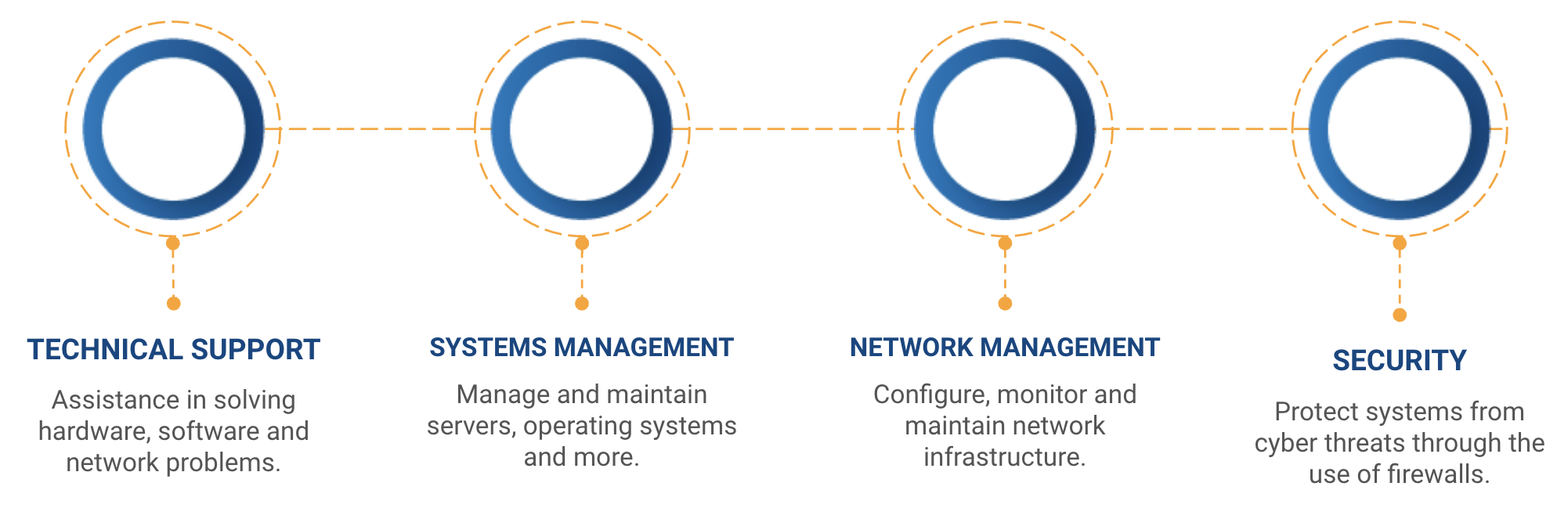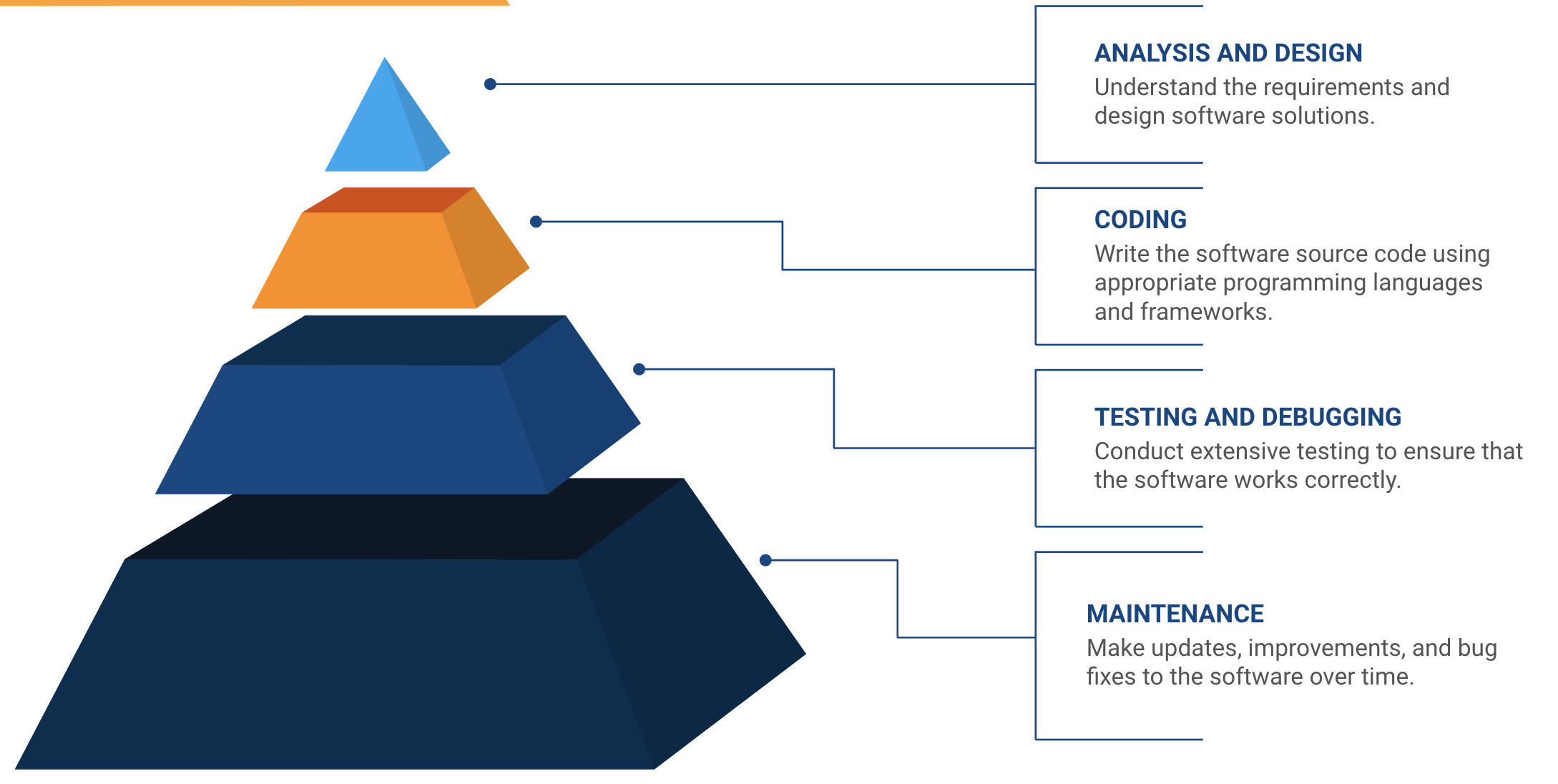
Two key concepts within the technological field are "IT services" and "software development". At first glance, these terms may appear similar, but they actually represent different aspects of technology management and application.
Although IT services and software development are distinct, they often overlap in practice. For example, in software development projects, development teams often need knowledge of system and network management to implement and maintain their applications. This overlap can lead to confusion about where one function ends and the other begins.
In this article, we'll explore the fundamental difference between IT services and software development, highlighting their unique roles, approaches, and contributions to the business world.
How comprehensive are IT services?
IT services cover a wide range of activities aimed at maintaining and improving an organization's technological infrastructure. “IT services refer to the application of business and technical expertise to enable organizations to create, manage, and optimize or access business information and processes", they explained in a Gartner article.
“The IT services market can be segmented based on the type of skills used to deliver the service (design, build, run). There are also different categories of services: business process services, application services, and infrastructure services”, they added.
Some key areas of IT services include:
- Technical Support: Provide assistance to end users to solve hardware, software and network problems.
- Systems Management: Manage and maintain servers, operating systems and IT components.
- Network Management: Configure, monitor and maintain the network infrastructure to ensure connectivity and security.
- Cyber Security: Protect systems and data from cyber threats through the use of firewalls, encryption and other security measures.

Examples of IT services requested by companies
Cloud services
“Since the information is stored in the cloud instead of stored on a computer, team members can access and use it whether at home or in the office. Some cloud services can even run operating systems remotely, allowing team members to use internal business programs remotely without installing them on their computers", they explained on the Indeed portal.
Backup solutions
Backup solutions guard against data loss by creating duplicates of information on external devices or in online environments, such as cloud-hosted services. The implementation of backup services stands as a preventive measure to preserve the integrity of corporate data in the event of eventualities, such as power outages or system failures.
Monitoring
Information technology (IT) services have the ability to monitor the network, the flow of data on the Internet, as well as computers and other devices connected online. The monitoring feature empowers IT teams to track interactions with business data, identify technology repair needs, and detect whether any computers require software updates or changes.
What does software development involve?
Software development focuses on the creation, design, and maintenance of applications and computer programs. This process involves the coding, testing, and deployment of software that addresses specific organizational or market needs. Software development is essential for innovation and continuous improvement of business operations and the products offered.
Some key aspects of software development include:
- Analysis and Design: Understand the requirements and design software solutions that meet the user's needs.
- Coding: Write the source code of the software using appropriate programming languages and frameworks.
- Testing and Debugging: Perform extensive testing to ensure that the software works correctly and correct any bugs or problems identified.
- Maintenance: Perform updates, improvements and bug fixes to the software over time.
“Software development is primarily carried out by programmers, software engineers, and software developers. These roles interact and overlap, and the dynamics between them vary greatly between development departments and communities", they added in an IBM article.

Most demanded types of software development
Frontend development
“This type of software development is visible to users as it consists of the graphical elements of any system, application or website. It involves creating a user interface and managing behavior on the client side. The user interface is an important part of making the software attractive to the end user”, they pointed out on the DEV portal.
They added: “When it comes to front-end web development, JavaScript, CSS and HTML are the main technologies. But mobile app development technologies are often different, especially when it comes to native app development”.
Backend development
Backend development refers to the type of development that occurs in the non-visible realm. In other words, it is intrinsic to the user's view. This is because backend development encompasses the operation of the server, which interfaces with databases, application programming interfaces, and other internal structures that drive the software application itself.
Full stack development
Full stack development refers to the practice of building computer applications and systems that encompasses both front-end and back-end development. A full stack developer is capable of working on all layers of an application, from the user-visible user interface to the internals and components that operate behind the scenes on the server.

The difference in perspective and approach between IT services and software development
The fundamental difference between IT services and software development lies in their perspective and approach. IT services focus on maintaining and optimizing existing technology infrastructure, while software development focuses on creating and enhancing software solutions tailored to address specific problems and needs.
Both aspects are essential for the effective functioning of an organization in the digital world, and their strategic combination can drive innovation and competitiveness in today's market.


